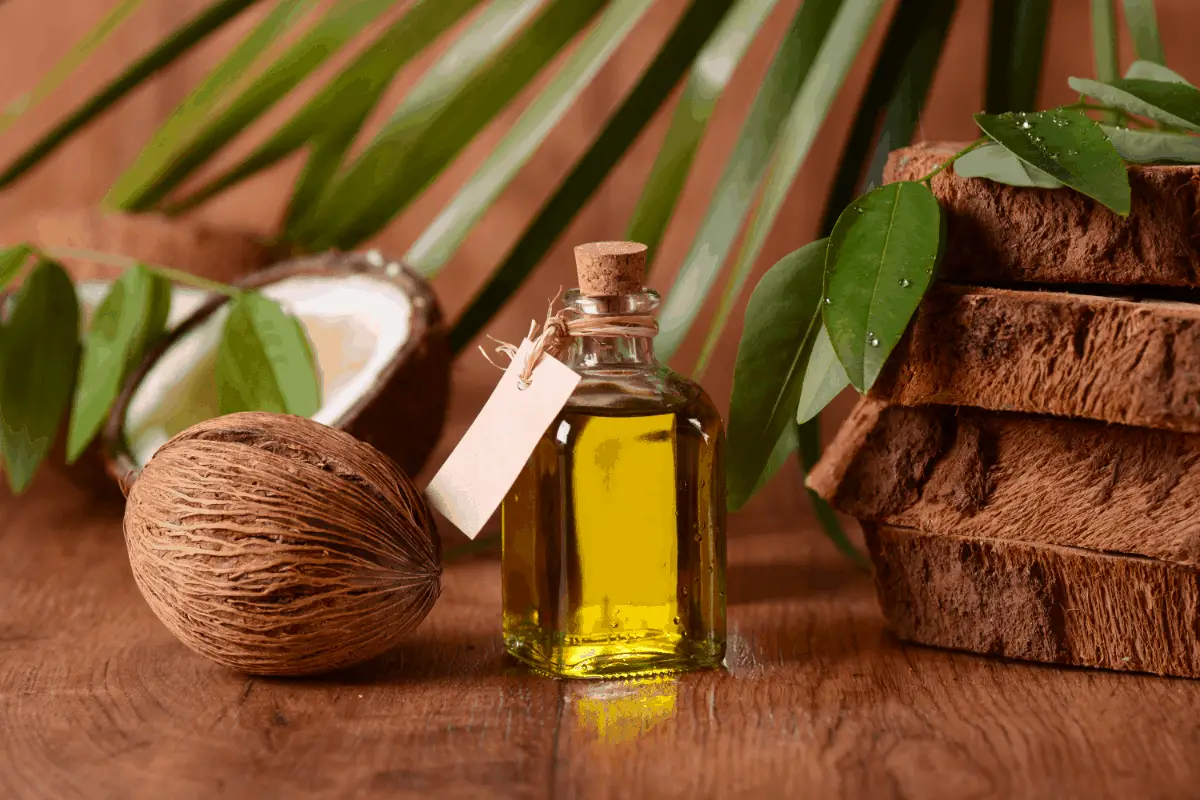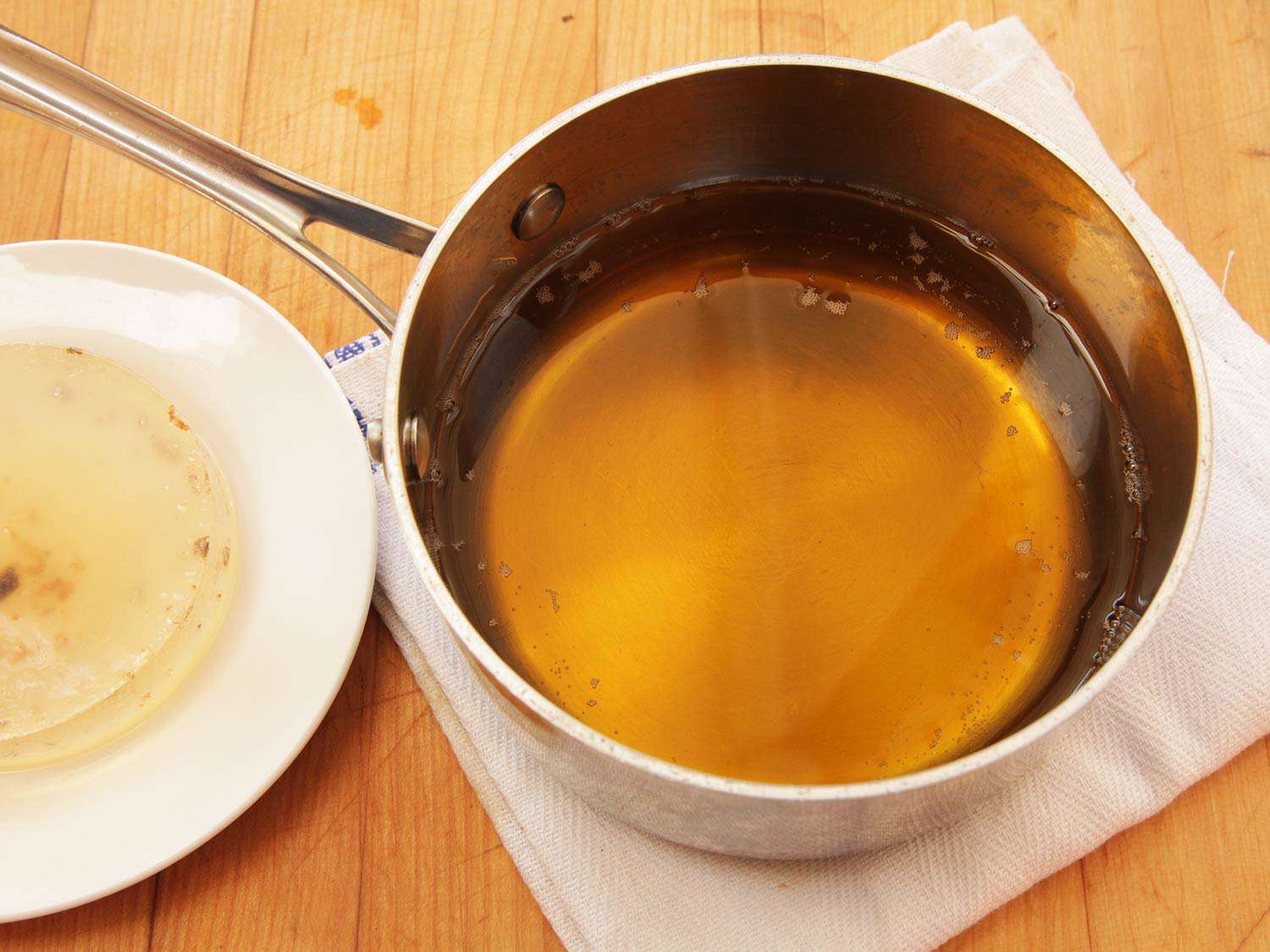

Articles
How To Store Oil
Modified: December 7, 2023
Learn the best practices for storing oil safely and efficiently. Read our comprehensive articles for step-by-step instructions and expert advice.
(Many of the links in this article redirect to a specific reviewed product. Your purchase of these products through affiliate links helps to generate commission for Storables.com, at no extra cost. Learn more)
Introduction
Welcome to the world of oil storage! Whether you’re a home cook, an industrial worker, or a small business owner, understanding how to properly store oil is crucial for maintaining its quality and safety. Proper oil storage not only prolongs the shelf life of the oil but also prevents contamination and potential hazards.
In this article, we will explore the importance of proper oil storage, the factors that affect oil storage, the right containers for oil storage, preparing the storage area, storing oil safely, monitoring oil storage conditions, and essential tips for long-term oil storage. So let’s dive in and get your oil storage game on point!
Read more: How To Store An Oil Painting
Importance of Proper Oil Storage
Proper oil storage is essential to maintain the quality and extend the shelf life of the oil. When oil is exposed to heat, light, and oxygen, it undergoes oxidation, which leads to a breakdown of its nutritional value, flavor, and aroma. By storing oil in the correct conditions, you can preserve its freshness and ensure it remains safe for consumption.
Moreover, improper oil storage can also lead to potential hazards. If stored in non-food-grade containers or in areas with high temperatures or humidity, oil can become contaminated with foreign substances, such as chemicals or microorganisms. Contaminated oil can pose health risks when consumed, causing foodborne illnesses and compromising the taste and quality of your dishes.
Given these factors, it is crucial to understand the best practices for oil storage to not only safeguard your health but also optimize the usage and enjoyment of the oil. So, let’s now explore the various factors that can affect oil storage.
Key Takeaways:
- Proper oil storage is crucial for maintaining freshness, flavor, and safety. Choose the right containers, prepare the storage area, and monitor conditions to ensure optimal oil quality and longevity.
- Long-term oil storage requires extra care. Transfer oil into smaller containers, maintain proper sealing, and monitor conditions to maximize shelf life and usability.
Importance of Proper Oil Storage
Proper oil storage is essential to maintain the quality and extend the shelf life of the oil. When oil is exposed to heat, light, and oxygen, it undergoes oxidation, which leads to a breakdown of its nutritional value, flavor, and aroma. By storing oil in the correct conditions, you can preserve its freshness and ensure it remains safe for consumption.
Moreover, improper oil storage can also lead to potential hazards. If stored in non-food-grade containers or in areas with high temperatures or humidity, oil can become contaminated with foreign substances, such as chemicals or microorganisms. Contaminated oil can pose health risks when consumed, causing foodborne illnesses and compromising the taste and quality of your dishes.
Nowadays, there are various types of oil available in the market, including vegetable oil, olive oil, coconut oil, and many more. Each type of oil has its unique properties and storage requirements. For instance, olive oil is particularly sensitive to heat and light exposure, while coconut oil tends to solidify at low temperatures. Understanding the specific storage needs of different oils will help you maintain their quality and maximize their usability.
In addition to preserving the quality of the oil, proper storage also helps to minimize waste and save costs. When oil is stored improperly, it can deteriorate quickly, leading to a need for frequent replacements. By implementing good storage practices, you can avoid unnecessary spoilage and ensure that your oil lasts longer.
Furthermore, ensuring the proper storage of oil is not only important for commercial and professional settings but also for households. Many people use oils in their everyday cooking, and by properly storing them, you can ensure that the oils you use in your meals are of the highest quality, providing you with healthier and tastier dishes.
Overall, investing time and effort in understanding and implementing proper oil storage practices is crucial for maximizing the longevity, quality, and safety of the oil. By doing so, you can minimize waste, avoid potential health risks, and enhance your culinary experience. In the next section, we will explore the various factors that can affect oil storage.
Factors That Affect Oil Storage
There are several factors that can influence the storage of oil and its overall quality. Understanding these factors is key to ensuring that your oil remains fresh, flavorful, and safe for consumption. Let’s take a closer look at the main factors that affect oil storage:
1. Temperature:
Temperature plays a significant role in oil storage. High temperatures can accelerate the oxidation process, leading to rancidity and a decrease in oil quality. It is essential to store oil in a cool place away from direct sunlight and heat sources like stovetops or ovens. Ideally, the storage temperature should range between 50°F and 70°F (10°C and 21°C) to maintain the oil’s freshness and extend its shelf life.
Read more: How To Store Olive Oil
2. Light:
Exposure to light can also have a detrimental effect on oil quality. Ultraviolet (UV) rays present in sunlight can increase the rate of oxidation, causing the oil to degrade more quickly. To protect your oil from light, store it in opaque or dark-colored containers that block out UV rays. Additionally, keep the containers in a dark storage area or cupboard to minimize light exposure.
3. Oxygen:
Oxygen exposure can lead to oxidative rancidity, which results in off-flavors and a decrease in oil quality. When oxygen reacts with the unsaturated fats present in oil, it can cause the formation of free radicals and increase oxidation. To mitigate oxygen exposure, ensure that oil containers are tightly sealed and avoid frequent opening and prolonged exposure to air.
4. Humidity:
Humidity can impact oil stability by promoting mold growth and moisture absorption. It is important to store oil in a dry environment with low humidity levels to prevent water condensation inside the containers. Avoid storing oil near areas with high humidity, such as the stove or refrigerator, to maintain its quality and prevent spoilage.
5. Container Quality:
The type and quality of the containers used for oil storage can significantly impact its overall quality and safety. Opt for containers made of food-grade materials, such as glass or stainless steel, as these materials do not react with the oil and are less likely to leach harmful substances. Avoid using containers made of plastic or metal that can degrade or leach chemicals into the oil over time.
By considering these factors and implementing the necessary precautions, you can ensure that your oil remains fresh, flavorful, and safe for consumption. In the next section, we will discuss how to choose the right containers for oil storage.
Read more: How To Store Oil Paintings
Choosing the Right Containers for Oil Storage
When it comes to storing oil, choosing the right containers is crucial to maintain its quality and safety. The containers you use should be specifically designed for food storage and made of materials that do not react with the oil or leach harmful substances. Let’s explore some of the best options for oil storage containers:
Glass Bottles or Jars:
Glass containers are an excellent choice for storing oil. They are inert and non-reactive, meaning they do not interact with the oil or introduce any unwanted flavors or chemicals. Glass bottles or jars with airtight seals help to minimize oxygen exposure. Look for tinted or dark-colored glass bottles to protect the oil from light.
Stainless Steel Containers:
Stainless steel containers are a popular choice for storing oils, particularly in commercial and industrial settings. They are durable, easy to clean, and do not react with the oil. Look for containers with a tight-fitting lid or a spout for easy pouring and minimal air contact.
Ceramic or Porcelain Containers:
Ceramic or porcelain containers are another option for storing oil. Similar to glass, these materials are non-reactive and do not impact the oil’s quality or taste. However, it’s essential to ensure that the containers are properly glazed and free from cracks or porous surfaces, as these can harbor bacteria or leach substances into the oil.
Read more: How To Store Truffle Oil
Food-Grade Plastic Containers:
If you prefer using plastic containers, make sure they are labeled as food-grade and specifically designed for oil storage. Look for containers made from high-density polyethylene (HDPE) or polypropylene (PP), as these materials are less likely to leach harmful chemicals into the oil. Avoid using regular plastic containers, as they may degrade over time and contaminate the oil.
Regardless of the type of container you choose, it’s crucial to ensure that it has a tight-fitting lid or seal to minimize oxygen exposure and prevent leakage. Additionally, make sure the containers are clean and dry before transferring oil into them to prevent contamination.
Remember to label the containers with the type of oil and the date of storage to keep track of freshness and rotation. Properly sealed and labeled containers will not only help you maintain the quality of the oil but also make it easier to use and identify different oils in your storage area.
Now that you know how to choose the right containers, let’s move on to preparing the storage area for proper oil storage.
Preparing the Storage Area
Properly preparing the storage area for oil is essential to create an environment that promotes the longevity and quality of the oil. Here are some key steps to follow when preparing your storage area:
1. Clean and Dry Storage Space:
Ensure that the storage area is clean, dry, and free from any potential contaminants. Clean any dust, debris, or spills that may have accumulated in the area. Oil can easily absorb odors and flavors, so it is crucial to keep the storage space clean and odor-free.
2. Avoid Moisture and Humidity:
Moisture and humidity can accelerate the degradation of oil and increase the risk of mold or bacterial growth. Choose a storage area that has low humidity levels and is away from areas with high moisture content, such as the kitchen sink or dishwasher. If necessary, use a dehumidifier to maintain optimal humidity levels.
Read more: How To Store Mct Oil
3. Temperature Control:
Maintaining a stable temperature is key to preserving the quality of the oil. Avoid storing oil in areas exposed to high temperatures or extreme temperature fluctuations, such as near the stove, oven, or refrigerator. Aim for a storage area with a temperature range between 50°F and 70°F (10°C and 21°C) to ensure optimal oil preservation.
4. Avoid Sunlight Exposure:
Direct sunlight can cause oil to degrade quickly due to the exposure to UV rays. Store oil containers in a dark and cool area to minimize light exposure. If the storage area has windows, consider using window coverings or blinds to block out sunlight.
5. Adequate Ventilation:
While it is important to keep the storage area protected from light and heat, it is also crucial to ensure proper ventilation. Good air circulation helps to prevent the build-up of odors and moisture, promoting the longevity of the oil. Avoid storing oil in closed cabinets without any ventilation or in congested areas.
6. Organization and Labeling:
Maintain a well-organized storage area by arranging the oil containers in a systematic manner. Consider using shelves or storage racks to keep the bottles or jars easily accessible and visible. Label each container with the type of oil and the date of storage to facilitate rotation and ensure that the oldest oils are used first.
By following these preparation steps, you can create an optimal storage environment for your oil. Properly preparing the storage area sets the foundation for safe and long-lasting oil storage. Next, let’s move on to the best practices for storing oil safely.
Read more: How To Store Essential Oils
Storing Oil Safely
Storing oil safely is crucial to prevent contamination, maintain its quality, and ensure the safety of those who consume it. Here are some essential guidelines to follow when storing oil:
1. Secure and Stable Position:
Place oil containers in a secure and stable position to avoid the risk of tipping over or falling. Ensure that shelves or storage racks are sturdy enough to support the weight of the containers. This will minimize the chances of accidents and spills.
2. Keep Away from Heat Sources:
Avoid storing oil near heat sources, such as stovetops, ovens, or radiators. Heat can quickly degrade the quality of the oil and increase the risk of fire hazards. Choose a storage area that is cool and away from direct heat exposure to maintain the freshness of the oil.
3. Seal Containers Properly:
Ensure that oil containers are tightly sealed to prevent oxygen exposure and minimize the risk of leakage. Check the lids or caps regularly to ensure a secure and airtight seal. This will help to maintain the oil’s freshness and prevent any potential contamination.
Read more: How To Store Frying Oil
4. Avoid Cross-Contamination:
Prevent cross-contamination by storing different types of oils separately. This is especially important if you have oils with strong flavors, such as sesame oil or chili oil, as they can transfer their flavors to other oils. Keep each type of oil in its own designated container to preserve its unique characteristics.
5. Use FIFO Method:
Follow the “First In, First Out” (FIFO) method to ensure that you use the oldest oils first. This helps to prevent oils from sitting in storage for too long and potentially deteriorating. Label the containers with the date of storage and consume the oils in the order of their storage to maintain freshness.
6. Avoid Refrigerating Oil:
While it’s common to refrigerate some food items, refrigerating certain types of oils, such as olive oil, can cause them to congeal and develop a cloudy appearance. This does not affect the quality of the oil but can be unsightly. It is best to store oil in a cool, dark place rather than in the refrigerator.
By following these safety guidelines, you can ensure that your oil remains in optimal condition and safe for consumption. Now let’s move on to the importance of monitoring oil storage conditions.
Monitoring Oil Storage Conditions
Monitoring the storage conditions of oil is essential to ensure that it remains fresh, safe, and of high quality. Regularly assessing and maintaining these conditions can help prevent spoilage, contamination, and potential health hazards. Here are some key aspects to consider when monitoring the storage conditions of oil:
Read more: How To Store Castor Oil
1. Check for Signs of Degradation:
Regularly inspect your oil for any signs of degradation. This includes checking for changes in color, smell, and taste. If the oil appears cloudy, has a rancid smell, or tastes off, it may be an indication of spoilage and should not be consumed. Dispose of any oil that shows signs of degradation.
2. Assess Storage Area Temperature:
Periodically measure the temperature of the storage area to ensure that it falls within the recommended range for oil storage. Use a thermometer to check the temperature and make adjustments if necessary. Sudden fluctuations or consistently high temperatures can negatively impact the oil’s quality and shelf life.
3. Inspect for Contamination:
Regularly inspect the oil containers for any signs of contamination, such as mold growth, foreign particles, or strange colors. If you notice any signs of contamination, immediately dispose of the affected oil and thoroughly clean the storage area to prevent further contamination.
4. Assess Light Exposure:
Periodically evaluate the storage area for any potential light exposure. Make sure the oil containers are placed in a dark or shaded area to minimize the exposure to light. If you notice sunlight or artificial light directly hitting the containers, consider relocating them to a more protected area.
Read more: How To Store Peanut Oil
5. Check Container Integrity:
Regularly inspect the containers for any signs of damage, such as cracks, leaks, or malfunctioning lids. Damaged containers can compromise the quality and safety of the oil. Replace any damaged containers and transfer the oil into new ones to ensure proper storage.
6. Test for Rancidity:
To test for rancidity, you can take a small amount of oil and smell it. If it has a strong, unpleasant odor resembling paint thinner or old nuts, it may be rancid. Additionally, taste a tiny amount of oil to check for any off-flavors. If the oil tastes bitter or has an off-putting taste, it may be rancid and should not be consumed.
By regularly monitoring these factors, you can identify any potential issues and take appropriate measures to maintain the quality and safety of your oil. In the next section, we will share some essential tips for long-term oil storage.
Essential Tips for Long-Term Oil Storage
Long-term oil storage requires extra care to ensure that the oil remains fresh and retains its quality over an extended period. By following these essential tips, you can maximize the shelf life of your oil and ensure its optimal usability:
1. Choose Fresh Oil:
Start with fresh oil when planning for long-term storage. Using oil that is already nearing its expiration date will result in a shorter shelf life when stored for an extended period. Purchase oils with a longer expiration date to maximize their storage potential.
Read more: How To Store Vegetable Oil
2. Transfer Oil into Smaller Containers:
Consider transferring oil into smaller containers during long-term storage. This helps minimize the oil’s exposure to air and reduces the chances of oxidation. Smaller containers also facilitate easier rotation, usage, and monitoring of the oil’s quality.
3. Store in a Dark and Cool Place:
Choose a dark and cool storage area away from sunlight and heat sources for long-term oil storage. Light and heat can accelerate the oxidation process and impact the oil’s quality. Aim for a consistent temperature range of 50°F to 70°F (10°C to 21°C) to maintain the freshness and minimize degradation.
4. Maintain Proper Sealing:
Ensure airtight seals on the containers to prevent oxygen exposure. Oxygen can cause oxidation and lead to rancidity. Always check the lids or caps to ensure they are securely tightened after each use.
5. Rotate and Use Older Oil First:
When storing multiple containers of oil, practice the FIFO (First In, First Out) method. Use the older oil first to ensure that it does not sit in storage for too long, maintaining its freshness. Label the containers with the date of storage to facilitate rotation.
Read more: How To Store Sesame Oil
6. Avoid Temperature Fluctuations:
Minimize temperature fluctuations in the storage area. Fluctuating temperatures can impact the oil’s quality and stability. Keep the storage area away from areas with extreme temperature changes, such as near the stove or refrigerator.
7. Regularly Monitor and Assess:
Continuously monitor the oil’s quality and regularly assess the storage conditions. Check for signs of degradation, such as changes in color, smell, or taste. Keep an eye out for any mold growth, particle contaminants, or leaks in the containers.
By implementing these tips, you can ensure that your oil remains fresh, flavorful, and safe for an extended period, allowing you to make the most out of your long-term storage. Now, let’s wrap up our discussion.
Conclusion
Proper oil storage is vital for maintaining the quality, flavor, and safety of the oil. By understanding the importance of proper oil storage, considering the factors that affect oil storage, choosing the right containers, preparing the storage area, storing oil safely, monitoring storage conditions, and following essential tips for long-term storage, you can ensure that your oil remains fresh and usable for an extended period.
By storing oil in a cool, dark place away from heat, light, and oxygen, you can prevent oxidation and maintain its nutritional value and flavor. Choosing the right containers made of food-grade materials such as glass, stainless steel, or ceramic helps to preserve the oil’s quality and prevent contamination. Preparing the storage area by keeping it clean, dry, and adequately ventilated creates an ideal environment for oil storage.
Storing oil safely involves secure placement, keeping it away from heat sources, proper sealing, avoiding cross-contamination, and following the FIFO method to use older oil first. Regularly monitoring storage conditions, checking for signs of degradation or contamination, and maintaining proper temperature and darkness are crucial for preserving oil quality.
Additionally, when planning for long-term storage, transfer oil into smaller containers, choose fresh oil, store it in a dark and cool place, ensure proper sealing, rotate and use older oil first, and avoid temperature fluctuations. Regularly monitor the oil’s quality and storage conditions to identify any issues and take necessary actions.
By implementing these practices, you can optimize the shelf life, quality, and safety of your oil, ensuring that it enhances your culinary creations and provides you with enjoyable and healthy meals.
Remember, proper oil storage is not only about maintaining its quality but also about promoting health and safety. So, take the necessary steps to store your oil correctly and reap the benefits of fresh and flavorful cooking. Happy oil storage and happy cooking!
Frequently Asked Questions about How To Store Oil
Was this page helpful?
At Storables.com, we guarantee accurate and reliable information. Our content, validated by Expert Board Contributors, is crafted following stringent Editorial Policies. We're committed to providing you with well-researched, expert-backed insights for all your informational needs.






0 thoughts on “How To Store Oil”